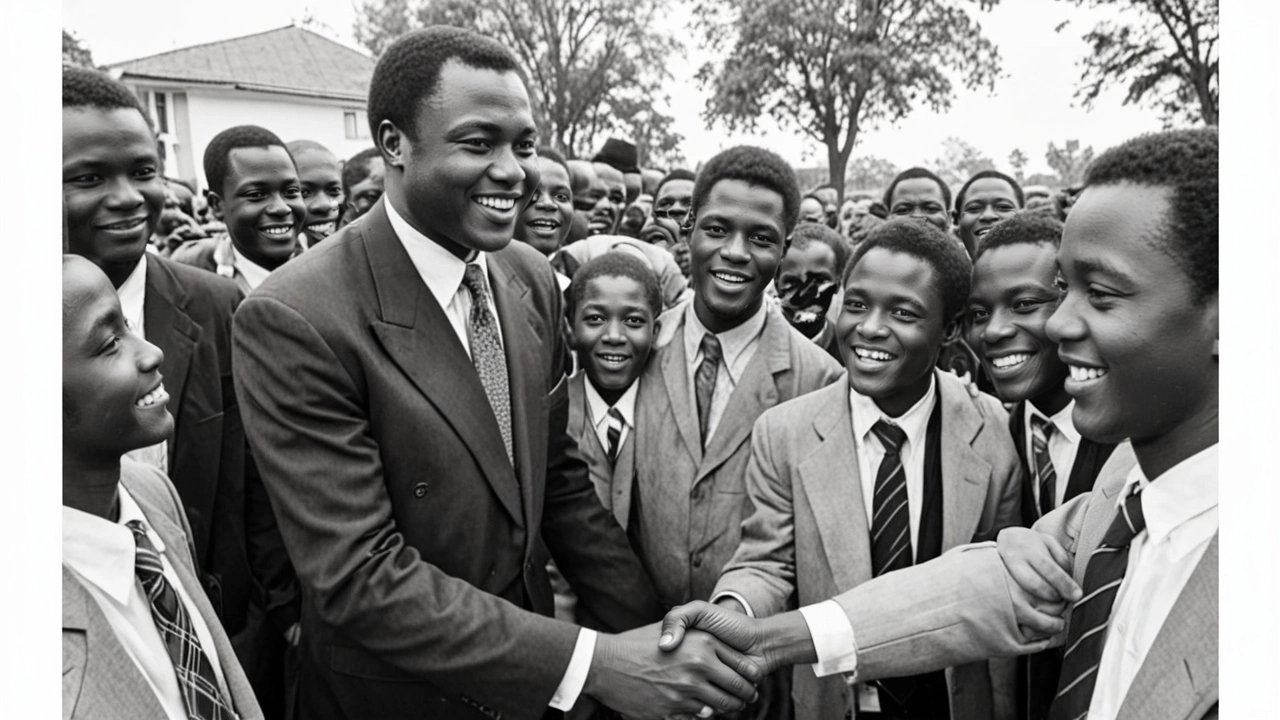Tom Mboya was one of Kenya's most energetic leaders in the 1950s and 1960s.
A trade union organizer turned national politician, he played a huge role in Kenya's march to independence and in building early post-colonial institutions. You've probably heard his name linked to student scholarships, workers' rights, and bold speeches that rallied ordinary Kenyans.
Mboya started as a union organizer who pushed for better pay and safer workplaces. He used practical tactics: strikes, negotiation, and public campaigns that forced employers and colonial officials to take notice. That experience shaped how he worked inside government—focused on delivery, not just rhetoric.
One of his best known efforts was the airlift programme that helped promising Kenyan students get scholarships to study abroad. That programme changed lives, creating a new generation of professionals who returned with skills to run schools, hospitals and government departments. It's a reminder that investing in education has long term value; Mboya backed a concrete plan and it paid off.
He also helped shape national politics after independence, working with other leaders to set Kenyan policy in those early years. He believed in strong institutions and in linking economic opportunity to political stability. His speeches often pushed for unity across ethnic lines and for practical economic plans to lift people from poverty.
Of course Mboya's career had controversy and fierce rivals. Politics then, as now, was messy: alliances shifted, accusations flew, and not every plan worked. That reality didn't erase his achievements. Instead it shows how hard it is to move a nation from colonial rule to self-governance while keeping peace and building services.
His assassination in 1969 shocked Kenya and left a gap in its political life. The event sparked protests and debates about national unity, leadership, and the future path for the country. Even decades later, people still discuss what Kenya might have looked like if he had lived longer.
Why does Mboya matter today? For two reasons. First, he shows how focused programs—like scholarships or labor reforms—can have big, measurable effects. Second, his life is a lesson about the fragility of political progress and the need for steady institutions to protect reformers and their work.
If you want to learn more, check articles here tagged with Tom Mboya, read biographies, or look for archival speeches and letters. They give a clearer picture of his thinking, his plans, and where he succeeded or fell short.
This tag page collects news and analysis related to Tom Mboya, his era, and his influence on modern Kenya. Follow the stories to see how his ideas still echo in debates about education, jobs, and national leadership.
Want quick reading suggestions? Start with a short biography, then read contemporary newspaper reports from the 1950s and 1960s to catch the tone of the era. Look for academic pieces on Kenya's labour movement and the airlift programme for deeper analysis. Finally, compare Mboya's ideas with current policy debates on education and jobs to judge how relevant his approach remains. Start reading today — don't wait.
DCI Launches Investigation into Alleged Acquisition of Pistol Used in Tom Mboya’s Assassination
The Directorate of Criminal Investigations (DCI) has opened an inquiry into claims that Ndwiga Kathamba, a 92-year-old man, purchased the pistol used in the 1969 assassination of Tom Mboya. Kathamba alleges involvement by KANU youth members in a plot to eliminate Mboya and details his role in acquiring the weapons from the black market. These claims have prompted the DCI to investigate further.
